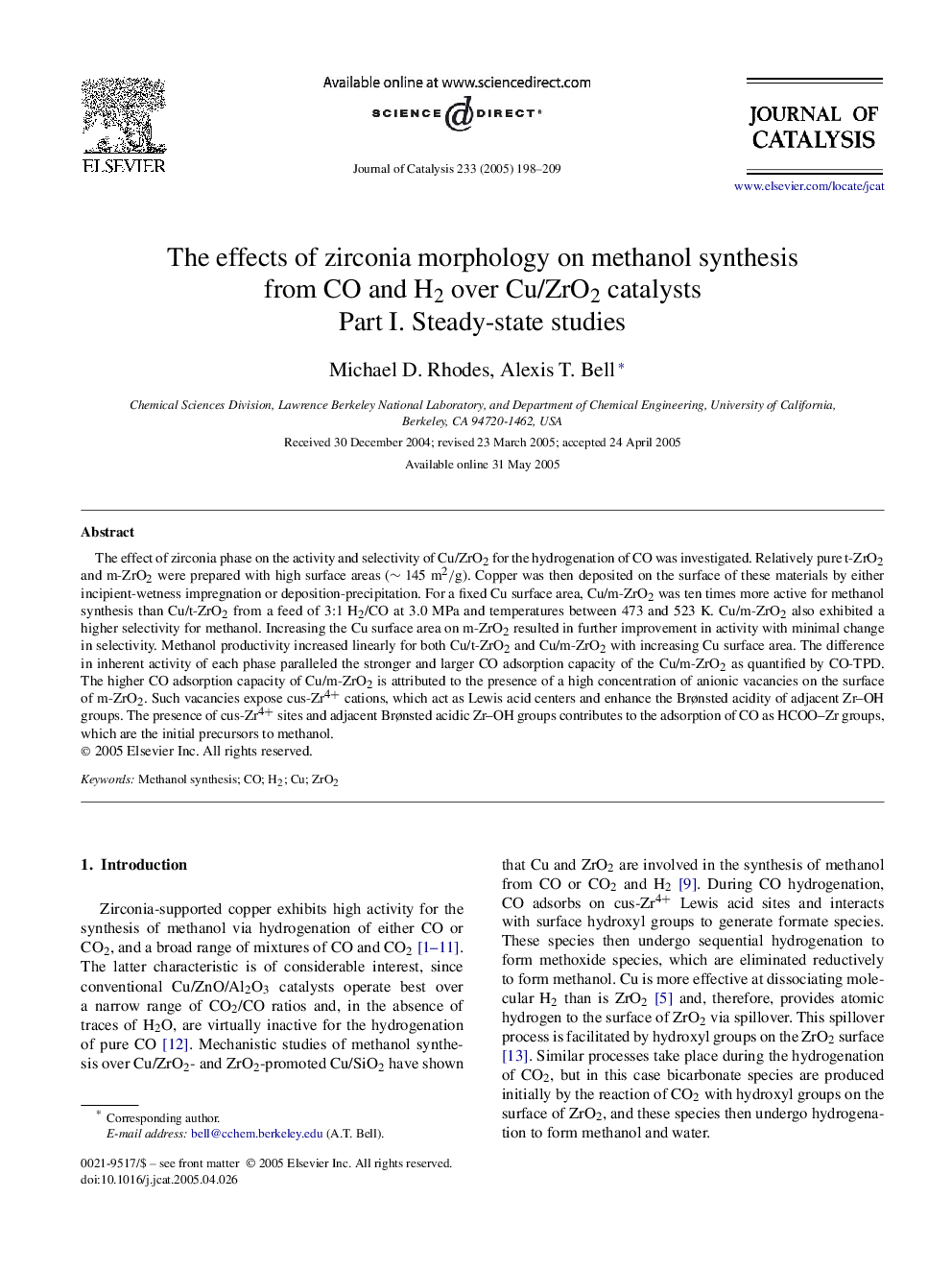| کد مقاله | کد نشریه | سال انتشار | مقاله انگلیسی | نسخه تمام متن |
|---|---|---|---|---|
| 10244787 | 47702 | 2005 | 12 صفحه PDF | دانلود رایگان |
عنوان انگلیسی مقاله ISI
The effects of zirconia morphology on methanol synthesis from CO and H2 over Cu/ZrO2 catalysts
دانلود مقاله + سفارش ترجمه
دانلود مقاله ISI انگلیسی
رایگان برای ایرانیان
موضوعات مرتبط
مهندسی و علوم پایه
مهندسی شیمی
کاتالیزور
پیش نمایش صفحه اول مقاله

چکیده انگلیسی
The effect of zirconia phase on the activity and selectivity of Cu/ZrO2 for the hydrogenation of CO was investigated. Relatively pure t-ZrO2 and m-ZrO2 were prepared with high surface areas (â¼145 m2/g). Copper was then deposited on the surface of these materials by either incipient-wetness impregnation or deposition-precipitation. For a fixed Cu surface area, Cu/m-ZrO2 was ten times more active for methanol synthesis than Cu/t-ZrO2 from a feed of 3:1 H2/CO at 3.0 MPa and temperatures between 473 and 523 K. Cu/m-ZrO2 also exhibited a higher selectivity for methanol. Increasing the Cu surface area on m-ZrO2 resulted in further improvement in activity with minimal change in selectivity. Methanol productivity increased linearly for both Cu/t-ZrO2 and Cu/m-ZrO2 with increasing Cu surface area. The difference in inherent activity of each phase paralleled the stronger and larger CO adsorption capacity of the Cu/m-ZrO2 as quantified by CO-TPD. The higher CO adsorption capacity of Cu/m-ZrO2 is attributed to the presence of a high concentration of anionic vacancies on the surface of m-ZrO2. Such vacancies expose cus-Zr4+ cations, which act as Lewis acid centers and enhance the Brønsted acidity of adjacent ZrOH groups. The presence of cus-Zr4+ sites and adjacent Brønsted acidic ZrOH groups contributes to the adsorption of CO as HCOOZr groups, which are the initial precursors to methanol.
ناشر
Database: Elsevier - ScienceDirect (ساینس دایرکت)
Journal: Journal of Catalysis - Volume 233, Issue 1, 1 July 2005, Pages 198-209
Journal: Journal of Catalysis - Volume 233, Issue 1, 1 July 2005, Pages 198-209
نویسندگان
Michael D. Rhodes, Alexis T. Bell,